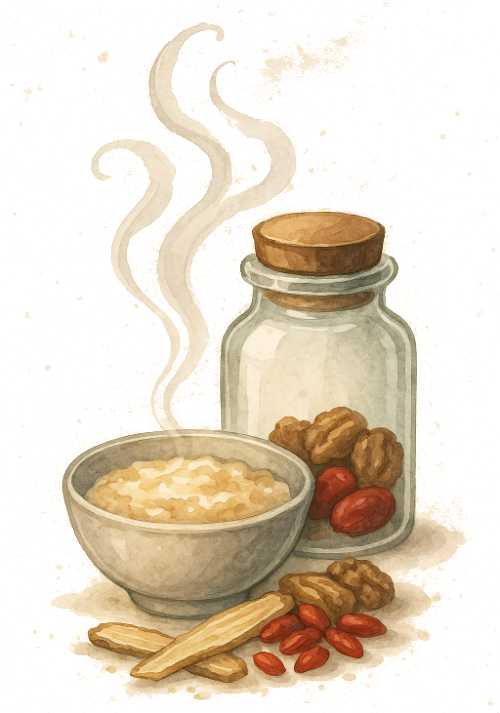Walking as Medicine:
A Chinese Perspective on Everyday Movement
In the West, walking is often viewed as a modest form of exercise, useful for clearing the mind or staying lightly active. But in traditional Chinese culture, walking—zǒulù (走路)—has long been recognized not only as a basic necessity, but as a foundation of lifelong health. Rather than a separate activity added to one's routine, walking is integrated into daily life and aligned with the principles of yangsheng (养生), the art of nourishing life.
Ancient Chinese medical texts refer to movement as a means of harmonizing qi (气), the body's vital energy. In the Huangdi Neijing, it is written: “Flowing water does not stagnate; the hinges of a door do not rust.” This simple metaphor captures a core idea: regular, gentle motion preserves health by keeping circulation—of blood, fluids, and energy—smooth and unobstructed.
 Walking is seen as the ideal gentle movement. It warms the limbs, stimulates digestion, supports lung and kidney function, and calms the spirit. In modern Chinese cities and villages alike, it’s common to see elders walking in the early morning, often in parks or along rivers, sometimes in groups, sometimes alone with mindful attention to posture and breath. These daily walks are not merely for exercise; they are a form of meditation in motion, a way to align with the rhythms of nature.
Walking is seen as the ideal gentle movement. It warms the limbs, stimulates digestion, supports lung and kidney function, and calms the spirit. In modern Chinese cities and villages alike, it’s common to see elders walking in the early morning, often in parks or along rivers, sometimes in groups, sometimes alone with mindful attention to posture and breath. These daily walks are not merely for exercise; they are a form of meditation in motion, a way to align with the rhythms of nature.
Practices like xingbu gong (行步功)—a walking-based qigong—emphasize slow, intentional steps coordinated with breathing. Even without formal training, many traditional health regimens recommend walking after meals to aid digestion, or using walking to combat fatigue and emotional stagnation. A famous saying goes: “Walk one hundred steps after a meal, live to ninety-nine.”
In a modern world where movement is often fragmented and disconnected from meaning, walking offers something deceptively profound: the chance to inhabit our bodies with attention. In Chinese health philosophy, health is not a goal to be achieved but a state to be maintained through daily practice. Walking, steady and humble, is one of its oldest and most accessible prescriptions.
Whether in a quiet garden or just around the block, each step becomes a small act of self-care—a rhythm echoing the wisdom of centuries.
Vocabulary Guide
- Zǒulù (走路) – Literally “walk road,” this is the everyday term for walking in Chinese. In traditional Chinese thought, walking is more than a mode of transport—it’s a gentle and essential daily practice that supports health and longevity.
- Yangsheng (养生) – Often translated as “nourishing life,” yangsheng refers to a broad set of lifestyle practices aimed at maintaining health, preventing illness, and aging gracefully. It includes diet, sleep, emotions, exercise, and even moral conduct.
- Qi (气) – Pronounced “chee,” qi is the fundamental life energy that flows through the body and the natural world. In traditional Chinese medicine (TCM), good health depends on the smooth, balanced flow of qi.
- Huangdi Neijing (黄帝内经) – Known as “The Yellow Emperor’s Inner Classic,” this foundational medical text dates back over 2,000 years. It presents the philosophical and practical underpinnings of traditional Chinese medicine, including the importance of seasonal living and movement.
- Xingbu gong (行步功) – A form of qigong (energy cultivation practice) focused on walking. The name means “walking step skill,” and it combines conscious stepping, posture, and breathing to harmonize body and mind.







